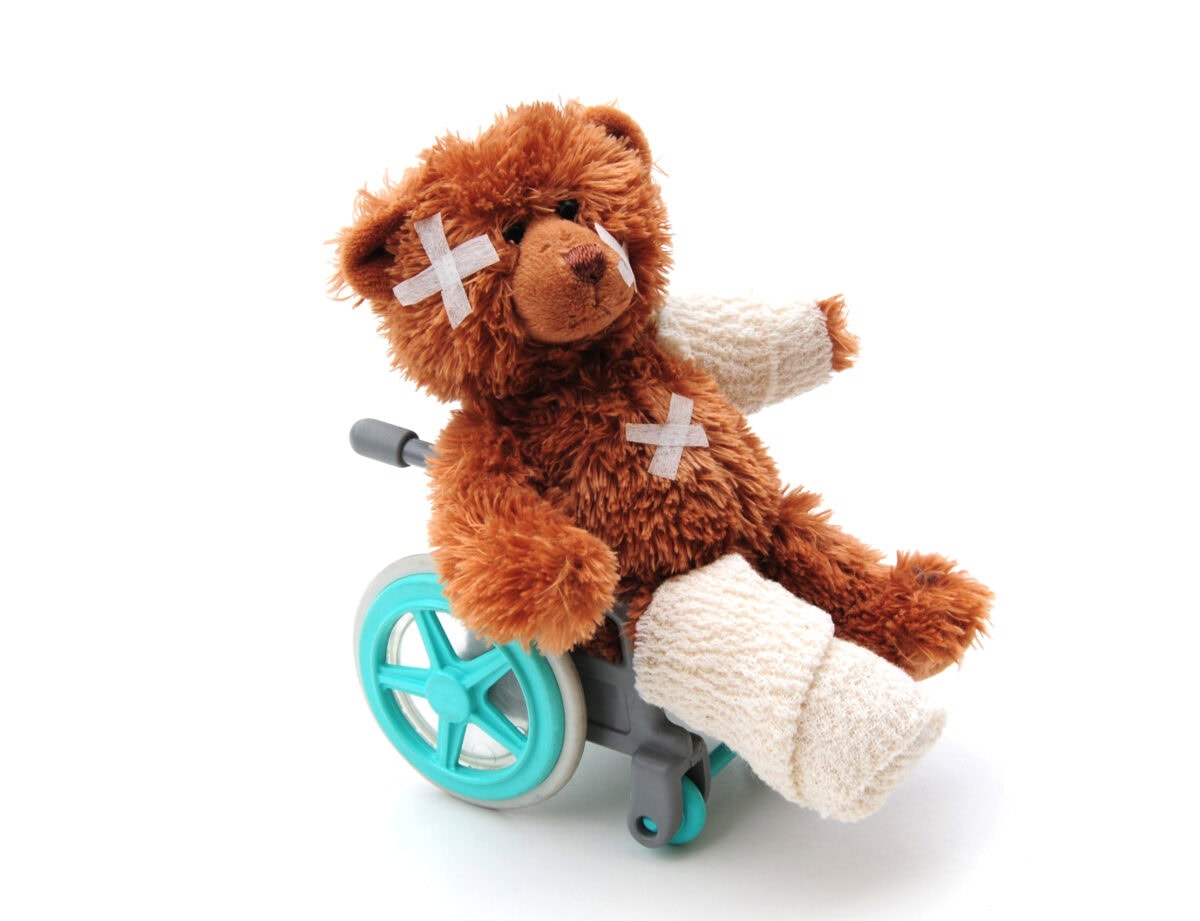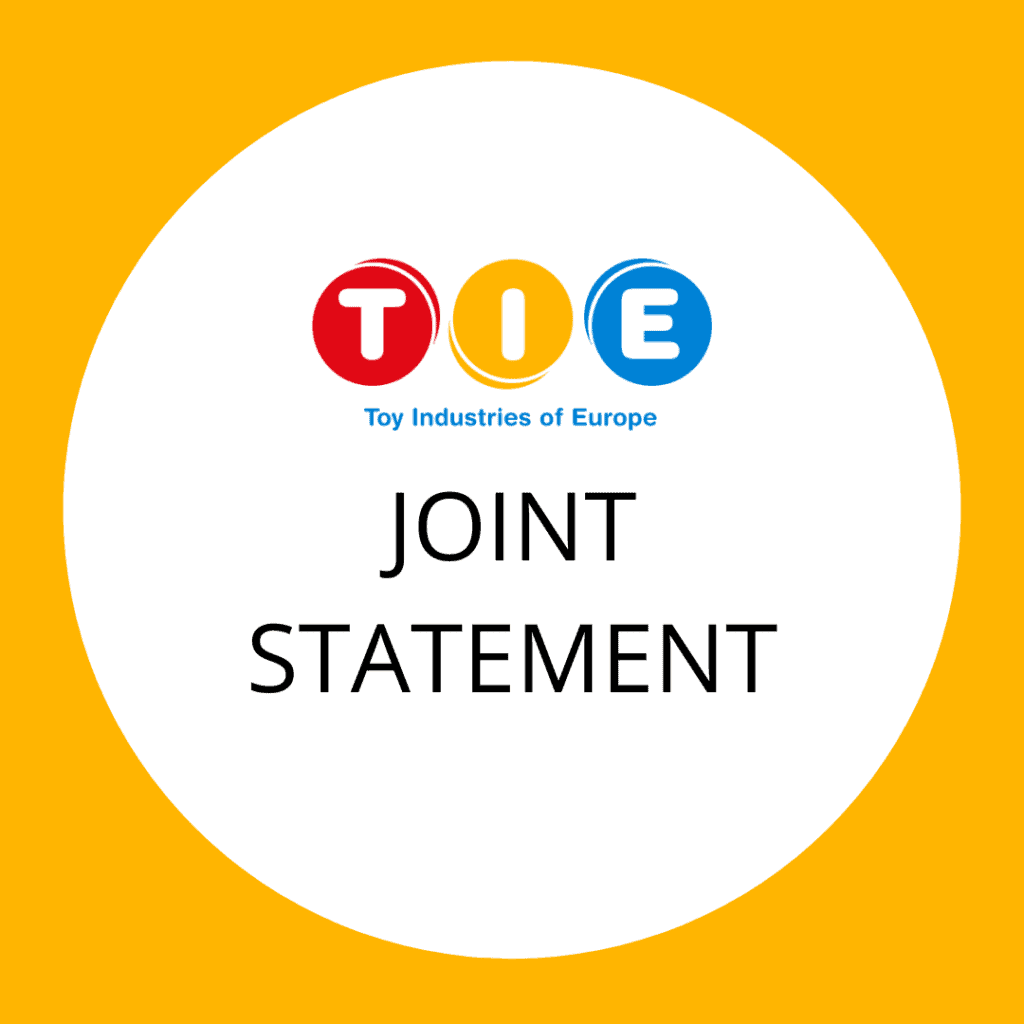Dishonest operators are putting children at risk and damaging the reputation of responsible companies
In 2018, toys from illegal traders were once again the product that appeared most often on Safety Gate – the EU-wide alert system for dangerous goods, according to the annual report published today.
They represented 30 percent of all products flagged by EU member states. They were followed by motor vehicles, clothing, electrical appliances and cosmetics.
Worryingly, approximately two in five of the 709 toys that were flagged last year did not even identify the maker. This is a basic obligation under the EU’s strict toy safety rules as authorities need to be able to easily contact the manufacturer if a recall or changes to the product are necessary.
Luckily, sub-standard toys represent just a tiny fraction of toys sold in the EU. The vast majority of toys are made by reputable companies who invest time and money in making sure they are safe for children to play with. This includes making sure products are easily identifiable and that they have processes in place to quickly address any issues that could occur.
One way for reputable companies to demonstrate their responsibility to safety is to become part of toy associations like TIE and its national association members. This gives companies who want to do the right thing access to expert advice and training and helps to raise standards across the board. The high prevalence of toys from dishonest traders in the Safety Gate statistics – 96% of alerts for toys were related to manufactures with no connection to any European toy associations, a large part of which were ‘ghost’ companies that cannot be traced – shows how important it is for authorities to work intelligently and adapt their methods to people who clearly have no intention of following the rules.
Unfortunately, the authorities responsible for market surveillance often suffer from a lack of resources. That’s where measures like focusing on suspect traders and making sure that actions are taken to deter repeat offenders can help.
The rapidly expanding online environment, where the accountability of sellers is often less structured than in traditional retail, comes with particular challenges. That’s why online sales platforms must take more responsibility for the toys they sell and why the Safety Gate system should have a mandatory field that identifies where the toy was bought to identify how the toy has made its way onto the market.
It’s clear that the work that the EU, and its members, does in stopping unsafe products from entering the market is vital. It protects consumers from potential harm and it protects reputable businesses, who invest in safety, from the unfair competition caused by dishonest traders ignoring the rules for profit.
Catherine Van Reeth, Director General of Toy Industries of Europe (TIE), the voice of reputable manufactures in the EU said “TIE members are reputable companies who prioritise the safety of the toys they make to help children play safely. Authorities have to work intelligently to keep toys from dishonest traders off the market. This means focusing on catching the criminals who intentionally ignore the rules for profit and put children at risk, and making sure they face more serious penalties”.
Questions and Answers
What is the EU Safety Gate?
The EU Safety Gate has been working to stop unsafe products – including toys – from reaching consumers since 2004. It does this by making sure that if a product that puts consumer health and safety at risk is seized by authorities in one country, the other 30 countries in the system are automatically alerted and can easily take action to stop it from being sold in their market or recall when needed.
On the figures
The figures we use are based on the information available on the Rapid Alert System Statistics portal. As such, the 709 toys that we refer to also include the so called “alerts for information” circulated via the Safety Gate. These types of alerts concern products for which the risk level cannot be established, or that lack sufficient traceability information. A total of 655 public alerts for toys were submitted on the Safety Gate in 2018. 96% of which were alerts for toys related to manufactures with no connection to any European toy associations, of which 2 in 5 didn’t comply with the basic EU toy safety obligation of identifying the maker.
Should parents be worried about the toys their child plays with?
Playing is an important part of growing up. It has positive benefits on children’s development, health and well-being and shapes them into the adults they later become. Toys have been a central part of playing for generations – studies show that toys can encourage children to play longer and explore new ways to play. Toys from reputable brands are designed to provide children with the most safe, appropriate and fun play experiences possible. The top tips in this video provide advice on choosing safe toys and ensure that children have the safest play experience possible.
Parents may have seen media coverage in 2018 about the risks of children playing with certain types of toys. Slime and squishy toys were featured in several stories for example. All toys, put on the EU market by reputable manufacturers go through stringent testing procedures to make sure they meet all relevant safety standards. This includes tests for the chemicals they contain. EU testing limits have been decided on the basis of sound scientific agreement and have buffers built in that already add an extra level of precaution.
Why do toys appear so often in reports about dangerous products?
The toys at the centre of official statistics on unsafe products in the EU tend to originate from dishonest operators. These figures do not represent the toys available to buy in the EU overall, and their appearance demonstrates good market surveillance in action.
However, this isn’t the full picture. It’s also important to remember that the EU toy sector operates in one of the strictest product safety frameworks in the world. The Toy Safety Directive is at the heart of this framework, and toy safety standards help to fill in the criteria for what a safe toy should look like.
To put the toy safety framework into context – a teddy bear’s fork has to meet stricter requirements than the real fork a child uses to eat its dinner with, and the textiles the teddy bear is made of have stricter chemical controls than the clothes the child wears.
This framework means that toys have to stand up to tougher rules than the many other products children come into contact with every day. Living up to these high-standards can be costly for manufacturers, unfortunately this means that a few dishonest traders choose to ignore the rules and cut corners for profit.
As well as being one of the most regulated product categories, toys are also one of the most highly scrutinised. On top of living up to tougher rules than other products, toys are also subject to more frequent controls by authorities. Rightly so given they are intended for children to play with.
The stricter rules and more frequent inspections mean that toys appear more often in market surveillance statistics than other products. However, their inclusion in these figures does not mean that toys are unsafe for children to play with: if all consumer products enjoyed the same level of scrutiny, we would see a comparable number of notifications for other categories.
The recent report shows that a large amount (44%) of toys were notified due to chemical dangers, namely the presence of phthalates. What is your reaction to this?
Although toys are one of the most strictly regulated consumer goods in Europe, these rules do not stop rogue companies from putting inferior products on the market. This means that effective market surveillance and enforcement are very important to prevent substandard toys from reaching children.
The majority of notified toys were manufactured in China. Are these toys dangerous?
The fact that the majority of all notified toys originate in China is not a reason for concern. China is an important toy exporting country and produces around 83% of toys on the European market. It is therefore to be expected that the majority of toys inspected by authorities come from China, which increases the likelihood that any notified toys may have been produced in China. It is important to remember that all toys placed on the EU market, regardless of where they are manufactured, must meet the same strict European toy safety requirements.
How can the EU help make sure that toys sold in the region are safe?
Ultimately, the answer is to increase resources for market surveillance and customs authorities and ensure that actions are smart, effective and target the dishonest traders who choose to ignore the rules. Sadly, because there will always be dishonest operators trying to make a quick euro, this might not reduce the number of toys appearing in market surveillance statistics, but it would mean that even fewer of them reach the market place. As the voice of reputable manufacturers, TIE calls for authorities to ensure that market surveillance is effective and well-enforced, economic operators are held accountable and that action is taken against those who ignore the rules.
This means:
- Proportionate checks that focus resources on suspect consignments and traders;
- The same level of accountability for all economic operators, regardless of whether toys are bought online or in traditional bricks and mortar stores;
- Dissuasive and proportionate actions against those who intentionally flout the toy safety rules.
What is Toy Industries of Europe?
Toy Industries of Europe (TIE) is the voice of the reputable European toy industry. TIE’s membership includes 15 direct international companies, nine European national toy associations, who represent their local manufactures, and six affiliate members who make toys but it’s not part of their main business.



